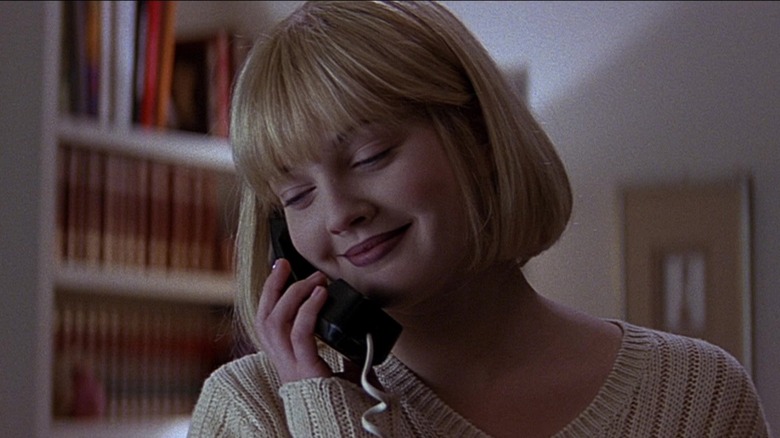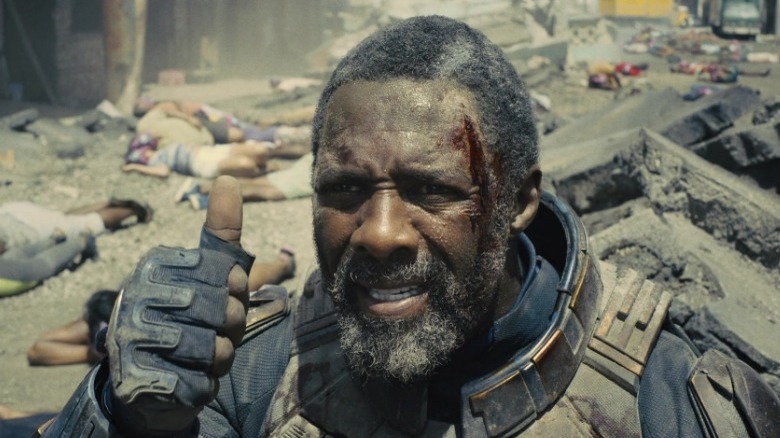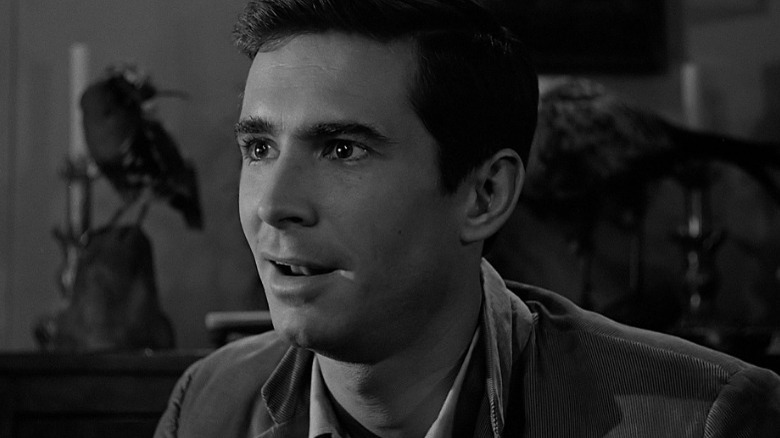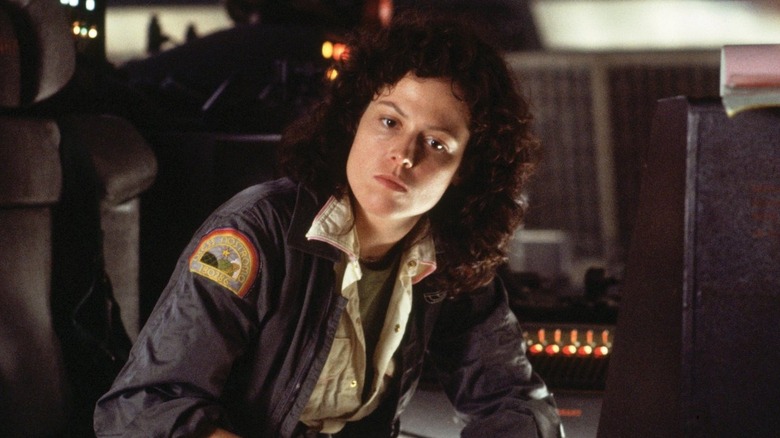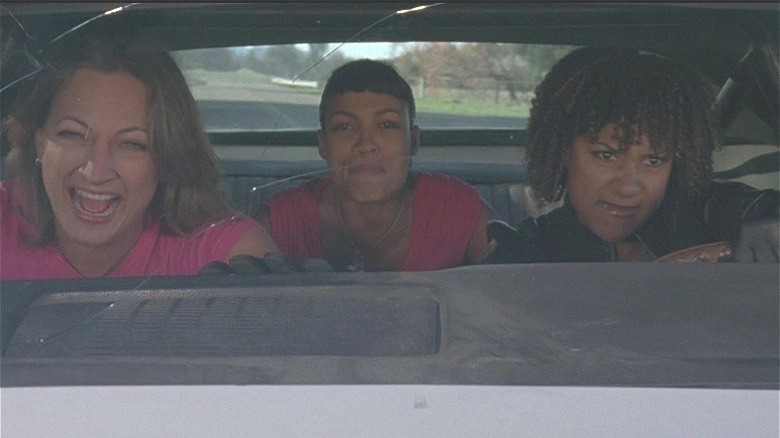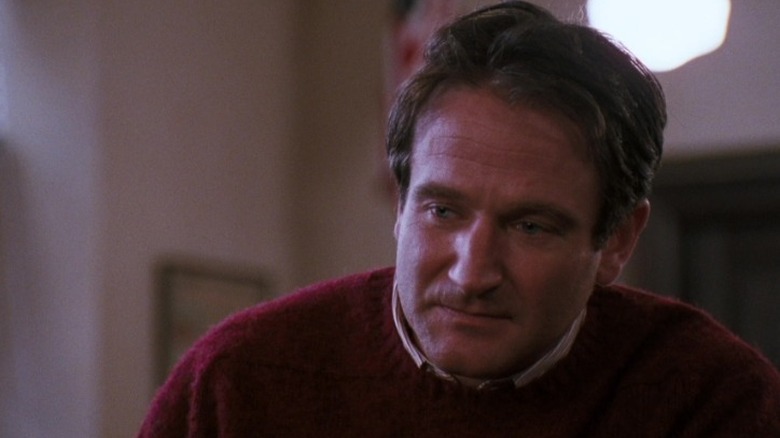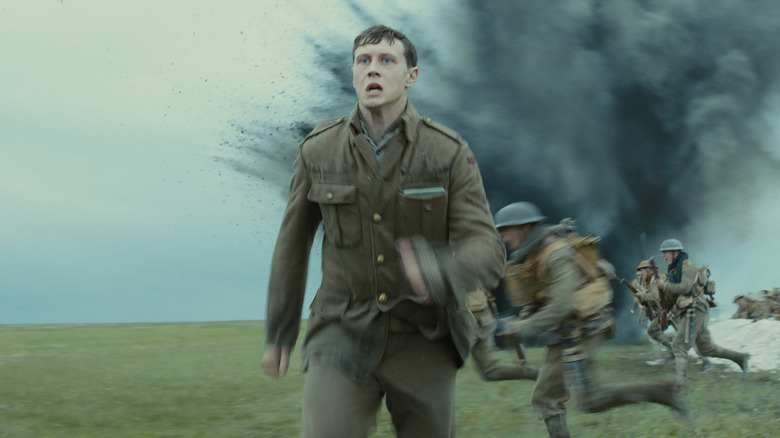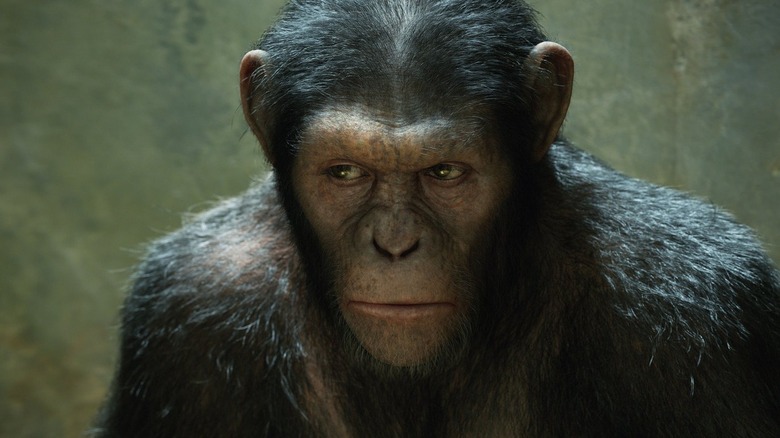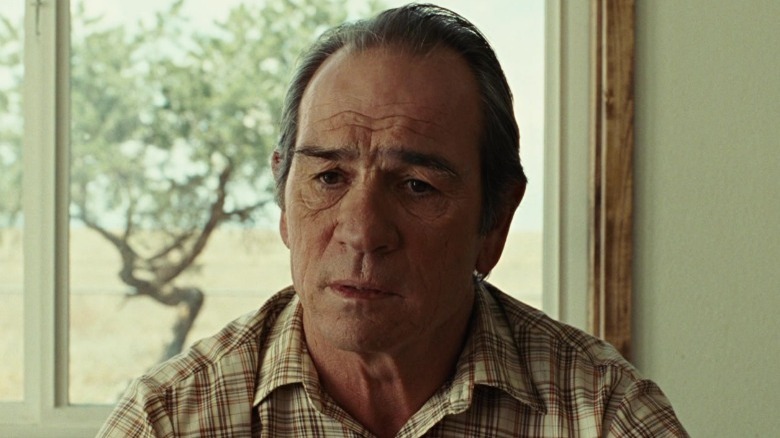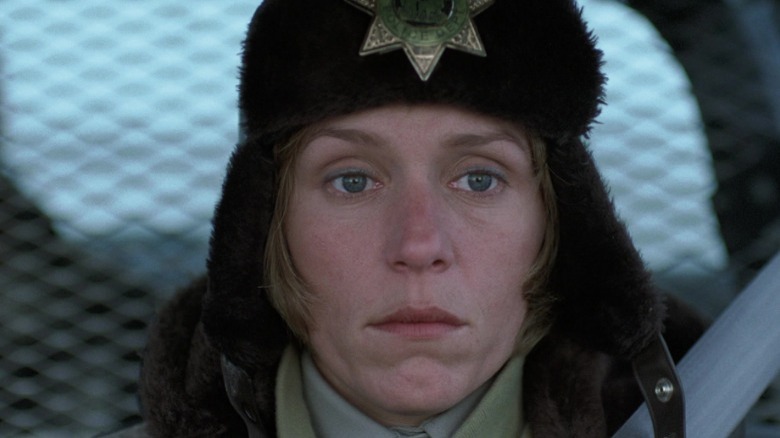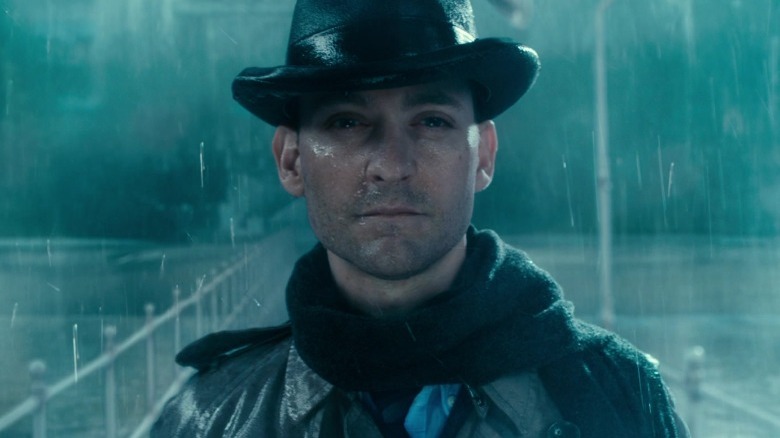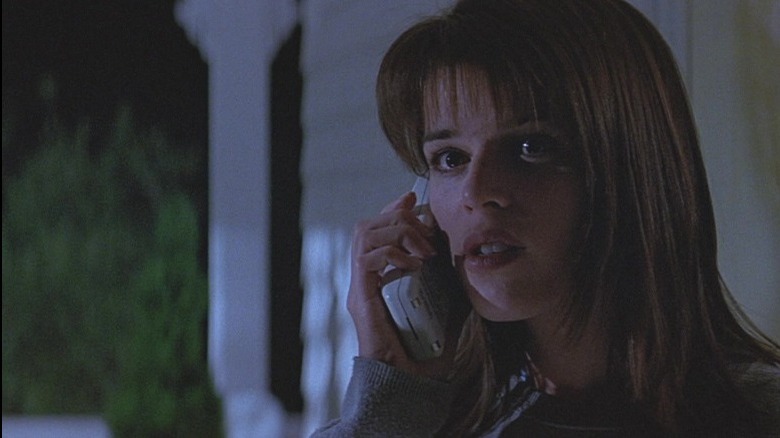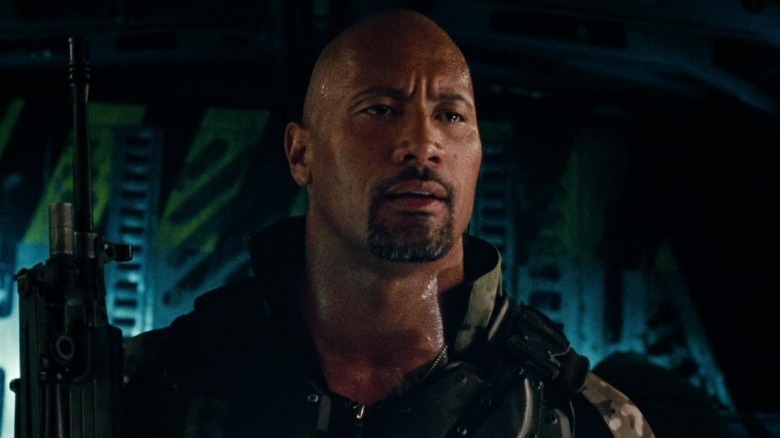Movies Where The Hero Isn't Who You Thought It Would Be
In the original "Star Trek" TV series, it was easy to tell who were the heroes and who were the background characters. The main characters were clearly Captain Kirk (William Shatner) and Mr. Spock (Leonard Nimoy), while the extras conveniently wore the color red.
When it comes to some films, however, the line between "main character" and "supporting character" isn't as clear-cut. In fact, certain movies can be quite misleading if you're trying to guess who the protagonist is. It turns out that the hero isn't always the first character you see, nor are they always the person featured most prominently in the trailers. Sometimes filmmakers can spend half the movie following a character who isn't even the protagonist.
How do filmmakers fool their audience about something as fundamental as the main character? One way to do this is to deliberately present a fake protagonist so they can rip the rug out from underneath the viewers when that character dies. Alternatively, they can have the true hero slowly emerge over the course of the movie, even as the audience realizes it was this character's story all along. For each of the films below, the hero is actually not who you thought it would be.
The Suicide Squad
Perhaps the most audacious instance of a movie playing bait-and-switch with the protagonist is James Gunn's "The Suicide Squad." The movie opens with Savant (Michael Rooker) in prison. His introduction is staged very much like a "hero shot" — even if Savant kills a bird in a way that is anything but heroic. Soon he's recruited to join the Suicide Squad (rebranded "Task Force X" for PR reasons). Fans meet an entire crew of superhero misfits, though the focus still remains on Savant. When Harley Quinn (Margot Robbie) pokes her head in at the end of the scene, it seems like an afterthought, or perhaps an obligatory cameo. Surely she's just a single member of a super team, and not even the most important one, right?
Once Task Force X goes on its first mission, however, it turns out to be a massacre. The movie zeroes in on Savant's face as he watches his team dying, which further feeds our assumption that he must be the main character. But nope — Savant gets his head blown off a few minutes later, leaving Harley Quinn as the sole survivor.
With this sequence, James Gunn challenges our assumptions of how a superhero movie should play out and what it even means to be a hero. After Savant's death, the rest of the movie focuses primarily on Harley Quinn, Ratcatcher II (Daniela Melchior), and especially Bloodsport (Idris Elba), who are the closest thing to the protagonists in this ensemble piece.
Psycho
Alfred Hitchcock's "Psycho" is a classic example of a movie that completely changes halfway – and the hero of the movie changes with it. Needless to say, Marion Crane (Janet Leigh) is not the heroine; she dies halfway through the movie in the unforgettable shower scene. Although Norman Bates (Anthony Perkins) doesn't appear until almost one-quarter of the film's runtime has passed, he is actually central to the story. He is, after all, the titular "psycho."
Although Bates is a cold-blooded killer, the movie tricks us into empathizing with him. When Marion first meets him, he just seems like a lonely young man who doesn't want to disappoint his mother. Hitchcock does this on purpose: he explained in an interview with Francois Truffaut (via Writing for Film), "I was directing the viewers. You might say I was playing them, like an organ."
Even after we see Bates commit murder, some of that empathy still remains. After all, we still care about Marion even though she steals $40,000, so Hitchcock challenges us to consider: why can't we also see the humanity in Norman? We feel his panic as he hurries to get rid of the evidence, his discomfort when Arbogast (Martin Balsam) interrogates him. The movie even tricks viewers into thinking that maybe Norman is a victim himself, pushed to the brink by his controlling mother. In short, "Psycho" is a horror movie from the perspective of the killer, which makes Norman Bates the indisputable protagonist.
Alien
One of the most famous protagonist fake-outs in cinema history is Ridley Scott's "Alien." Understandably, most viewers assume that the hero must be Captain Dallas (Tom Skerritt), since sci-fi stories like "Star Trek" have conditioned fans to expect that the captain of a spaceship will survive while the redshirts are expendable. Yet "Alien" turns that expectation on its head. All the characters here would be considered redshirts in the "Star Trek" universe. Ridley Scott described them as "space truckers," according to production designer Roger Christian (per Forbes). Since they're all essentially disposable, that means nobody is safe.
Among the first characters to die in "Alien" are the characters who should be most likely to survive. Kane (John Hurt), the second-in-command, is the first to go, and Captain Dallas soon follows, leaving Ripley (Sigourney Weaver) in charge. Even Ash (Ian Holm), the android science officer, would be handy to have around, since he seems to know more about the xenomorph than any other crew member. But no such luck; Ash is willing to let the entire crew die in order to study the xenomorph, and then he dies, too.
This is when Ripley steps up to the plate, and here her character truly shines. As it turns out, Ripley proves to be an amazing leader. She goes from being the most uptight, rule-abiding member of the crew to a heroine who abandons her training and thinks outside the box. Make no doubt about it: the film completely belongs to Ripley.
Death Proof
Fans know right away that "Death Proof" is a horror movie, so naturally they expect a high body count. But we suspect most viewers figure at least one character will make it out alive, especially since the movie spends so long developing Arlene (Vanessa Ferlito). Arlene is not quite like the other girls: she's a bit of an outcast, and the first to notice that something is horribly wrong. In other words, Arlene pretty much screams "Final Girl," and in fact director Quentin Tarantino deliberately wrote her that way.
"I've been giving subconscious hints that she's gonna be okay, which to me makes it all the more exciting [when she dies]," Tarantino told Sight and Sound (via the BFI). Rather than picking off the girls one by one, the villain, Stuntman Mike (Kurt Russell), runs them over with his car, killing all of them at once in a jarring twist. Once Arlene dies, Tarantino told Sight and Sound, viewers will "know now that [the director is] not to be trusted."
After a time skip, the movie picks up with an entirely new cast, another group of girls targeted by Stuntman Mike. This time, however, Stuntman Mike gets his just desserts — not at the hands of the Final Girl, but by three women working together. This ending deconstructs the Final Girl trope and asks why only one girl needs to survive in a horror movie. These three girls do more than just survive – they get things done.
Dead Poets Society
The hero of "Dead Poets Society" is not, as you might think, teenager Neil (Robert Sean Leonard). Sure, we see the enlightening classes with Mr. Keating (Robin Williams) through the eyes of Neil, and his story is front and center for much of the film. But with 20 minutes still remaining in the movie, Neil kills himself — a twist that perhaps nobody sees coming in this otherwise traditional coming-of-age story. The last character you expect to die is the Society's most enthusiastic member.
Looking back, it's clear that the protagonist is not Neil or his fellow students, but Keating. The movie is meant to explore one teacher's efforts to impart some wisdom to his pupils. Keating soon discovers his limitations when he learns of the immense pressure placed on Neil by his abusive father (Kurtwood Smith); Keating is powerless to help Neil with his troubles at home. After Neil's death, Keating starts to fear that he failed in his mission. His students become disillusioned, and Keating is fired, replaced by a much stricter instructor. However, the movie's ending shows all of Keating's class using what he taught them (the dream of every teacher). That's how Keating knows his students will be all right.
If you or someone you know may be the victim of child abuse, please contact the Childhelp National Child Abuse Hotline at 1-800-4-A-Child (1-800-422-4453) or contact their live chat services.
If you or anyone you know is having suicidal thoughts, please call the National Suicide Prevention Lifeline by dialing 988 or by calling 1-800-273-TALK (8255).
1917
At first it seems obvious that Blake (Dean-Charles Chapman) is the hero of "1917." After all, he is the soldier summoned by the general (Colin Firth) for a mission, and it is Blake's brother who will die if he fails this mission. In fact, Blake is the first one we see in the opening shot, so naturally we assume he's the main character. Meanwhile, Schofield (George MacKay) seems more like a sidekick, the reluctant partner whom Blake chooses to accompany him on his mission.
But then, in a jarring plot twist, Blake is mortally wounded. As Blake lies dying, he makes Schofield promise to finish the job in his place. The torch passes to Schofield, who we realize was actually the protagonist all along. Screenwriter Krysty Wilson-Cairns explained to Collider, "In a way, after Blake dies, [Schofield] takes Blake on. Blake becomes a part of him." She added, "So when he goes through all that second half of the film, he's more like Blake than ever before." Schofield becomes more daring, more willing to risk everything to fulfill his friend's dying wish. It is Schofield, not Blake, who undergoes the most dramatic transformation.
Observant viewers will notice that this is foreshadowed right from the opening scene. Blake may be the first one viewers see, but once the shot widens to include Schofield, you'll notice that Schofield takes up most of the foreground — a hint that this was always his story.
Rise of the Planet of the Apes
Although the chimpanzee Caesar (Andy Serkis) may only get two lines of spoken dialogue, he is undoubtedly the true hero of "Rise of the Planet of the Apes." Sure, his human companion Will (James Franco) sets the story in motion, and while Will certainly has a dynamic character arc, his story becomes increasingly less important as the movie goes on. By the movie's one-hour mark, Will's arc is mostly over; he has already raised Caesar, watched his father die, and quit his job at Gen-Sys. In the movie's climax, Will is mostly a bystander — as he should be.
Since the "Planet of the Apes" reboot trilogy is meant to show the rise of the apes from their perspective, it's only fitting that Caesar is the true protagonist. Shifting the focus to Caesar gives the character agency and reminds viewers that the whole planet doesn't necessarily revolve around humans. Without a doubt, the movie is about the "rise" of Caesar — his identity crisis that arises from being too human for the apes but too ape for the humans, as well as his ultimate choice to side with his fellow apes. It's worth noting that the film had an alternate ending in which Will died to save Caesar, but that version was scrapped — in part, perhaps, because the climax is supposed to be about Caesar, not Will.
The sequels only drive home who the real protagonist is; Will is barely mentioned for the rest of the trilogy.
No Country for Old Men
Anybody can tell you who the villain is in "No Country for Old Men." It's Anton Chigurh (Javier Bardem), the ruthless hitman with an off-putting haircut. But who's the hero of the film? You would think it's Llewlyn (Josh Brolin), since most of the movie follows Llewlyn after he makes the stupid decision to steal a suitcase full of money. It doesn't hurt that Llewlyn looks like the hero of a traditional Western, complete with a Southern drawl and a cowboy hat. However, "No Country for Old Men" is anything but a traditional Western.
Three-quarters of the way into the movie, Llewlyn gets killed, and it's not even the villain who kills him. Instead, he's gunned down by some random background characters. There's no final showdown for Llewlyn, no dying words — just a brutal, senseless death. By this point, most viewers are probably wondering why the movie is still going if Llewlyn is dead. That's because the movie is actually about Sheriff Bell (Tommy Lee Jones). The story only truly ends after the Sheriff gives up trying to catch the killer and retires, as he finally begins to accept that he can't fix the whole world.
This twist doesn't come completely out of left field. Those who are paying attention will notice that Bell is actually narrating the opening scene, so he is actually the first character the audience meets, and he's the last character they see before the end credits.
Fargo
"Fargo" toys with your expectations right from the get-go. The film has no qualms about misleading audiences, as seen by its epigraph, which promises a "true story" even though that's not quite true, and its title, because aside from one scene set in Fargo, most of the movie is actually set in Minnesota.
In the opening scene, viewers can't help but sympathize with Jerry Lundergard (William H. Macy) because he's so clearly out of his league. However, Jerry soon reveals his true colors. Jerry arranges the kidnapping of his wife, manipulates his father-in-law to pay the ransom, and only remembers his poor son as an afterthought. Before long, audiences are no longer rooting for him. Luckily, directors Ethan and Joel Coen give us somebody else to root for.
Half an hour into the film, we are introduced to pregnant cop Marge (Francis McDormand). Fans may be initially confused when the film takes detours to show Marge doing things that have nothing to do with the case, like reuniting with an old friend or ordering food from Arby's. However, these seemingly insignificant moments are very important. Marge's life may not be glamorous, but — unlike Jerry or anybody else in the movie — she's content with it. That's why the film lingers so long on those mundane moments from Marge's life, and why she is the hero of the story. The Oscars seemed to agree, because they nominated Macy for Best Supporting Actor and awarded McDormand the prize for Best Actress.
The Great Gatsby (2013)
Despite what the film's title suggests, Jay Gatsby (Leonardo DiCaprio) is not the star of Baz Luhrmann's "The Great Gatsby," not least because he dies before the movie is over. Although many of DiCaprio's most iconic roles are as a leading man, here he takes a backseat to Tobey Maguire, who plays the real hero of the film: Gatsby's neighbor Nick Carraway. Nick may be a witness to Gatsby's story, but he has a story arc of his own, and arguably that narrative is more important.
For much of the film, Gatsby is a bit of an enigma to Nick. The carefully-constructed persona that he displays at parties is fake; he fabricates a glamorous history for himself. At first it's hard to tell what makes Gatsby tick, which makes him a compelling supporting character but not very much of a protagonist.
On the other hand, "The Great Gatsby" gives us an intimate look inside Nick's head. The film explores his reactions to the rumors circulating about the other characters and his disillusionment with the wealthy crowd that Gatsby wants so desperately to accept him. Much like "Fargo," it's the most sensible and down-to-earth character who anchors us in the story, even as the rest of the cast is entangled in a mad scramble for money and power.
Scream (1996)
If you were to watch Wes Craven's 1996 film "Scream" for the first time, you would be forgiven for assuming that Casey (Drew Barrymore) is the main character. After all, Casey is featured prominently in the trailer, and the first 10 minutes of the movie follow this character — until she is violently murdered. The rest of the movie follows Sidney Prescott (Neve Campbell) and her friends as they try to evade Casey's killer.
Barrymore was excited about the script from the start because it was so subversive. "I loved that it actually got tongue and cheeky but it was still scary," she told Entertainment Weekly. The actress almost starred in "Scream" as the main character, but she ultimately decided to shake things up, taking the role of Casey instead of Sydney.
Why did she give up the lead role? "In the horror film genre, my biggest pet peeve was that I always knew the main character was going to be slugging through at the end, but was going to creak by and make it," Barrymore explained in an interview with Hot Ones. "What I wanted to do is to take that comfort zone away, so I asked if I could be Casey Becker so that we would establish that that rule does not apply in this film." Given that Barrymore had already played the central character in horror movies such as "Doppelganger" and "Firestarter," we suspect many viewers were fooled.
G.I. Joe: Retaliation
Normally it's a pretty safe assumption that the star of a movie is going to return in any potential sequels. Not so for "G.I. Joe." When "G.I. Joe: Retaliation," came out, fans understandably thought that the hero would be Duke (Channing Tatum), since he was the protagonist of the first film. Instead, Duke is killed off in the first 10 minutes, and Dwayne Johnson's Roadblock steps up to take the character's place.
Tatum told Vanity Fair that he had no regrets about leaving the franchise and didn't enjoy working on the first movie, saying, "The first one, I passed on seven times." In an interview with Howard Stern, Tatum explained that he'd loved G.I. Joe as a kid and wouldn't have minded portraying the character — until he saw the movie's script. "The script wasn't any good," he said, adding that he only wanted to participate in a film that did the character justice. In any event, Tatum felt it would have been much cooler to play Snake Eyes, but the studio insisted that he play Duke.
Of course, it didn't really matter what Tatum wanted to do, because he had signed a three-picture deal with Paramount and was contractually obligated to star in "G.I. Joe: The Rise of Cobra." According to Tatum, the studio basically told him, "You're doing this, or we're gonna sue you." Luckily, Tatum managed to convince Paramount to kill off his character at the beginning of the sequel, letting Roadblock take over.
